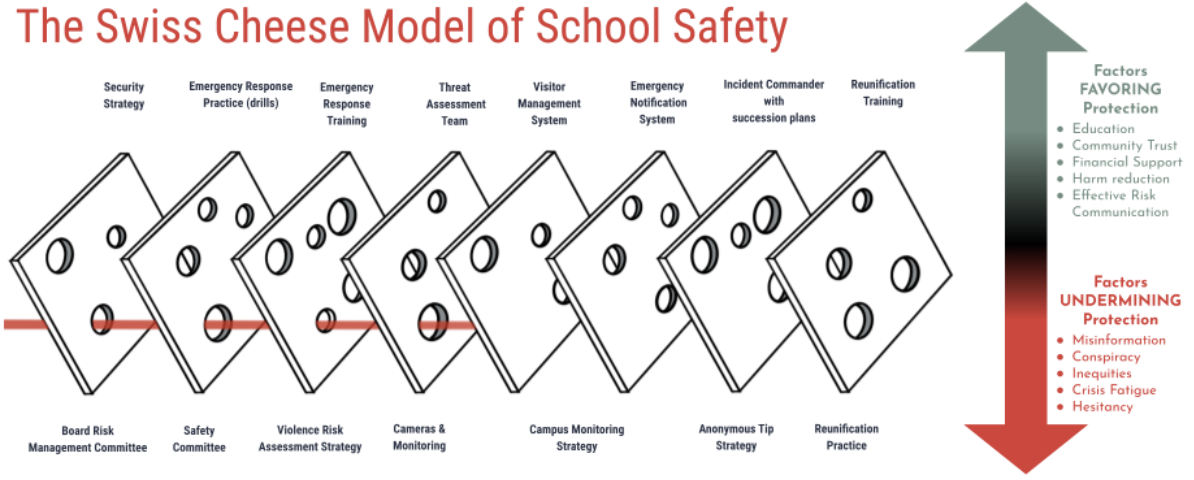The shooting at The Covenant School in Tennessee on Monday, March 27, 2023, was our nation’s deadliest K-12 school shooting in nearly a year. As happens following many school shootings, this one has brought back into focus an enduring and challenging question: How can schools balance keeping students physically safe with the desire for our communities to be open and engaging?
We believe - in fact, we know - this can be done. And we know more schools are capable of achieving this balance. How? In large part, by taking a complex, multifaceted approach to safety that layers prevention and mitigation measures to make our systems stronger as a whole.
Remember the swiss cheese model from our early Covid days? For those who aren’t familiar, this was (and still is) the idea that Covid-19 prevention measures (masks, vaccination, social distancing, ventilation, etc) are not perfect in and of themselves because each has “holes” in it (much like a slice of swiss cheese does). But when layered together, the holes become much smaller, or even covered almost entirely, significantly strengthening mitigation and reducing the spread of the virus.
What does this have to do with school shootings, you might be asking? Well, everything. Because we know when it comes to understanding and assessing threats, single layers (such as single sources of information) can have big holes. But when layered together with other information from individual observations, medical information, risk assessments etc, we can help close those holes and create a clearer picture to aid mitigation.
Additionally, much like we did with Covid, we can combine multiple layers of mitigation to create barriers that prevent an active shooter from advancing quickly and/or creating widespread harm. Locked doors. Cameras. Campus monitoring strategies. These are all layers of swiss cheese that can help slow the harm and together, they make an impact.

If you’re looking for steps to take in the immediate term, or things to tackle long term, here’s a few places to start:
Things you can do for free:
- Train staff using decks/tools from Joffe Academy, FEMA, or other trusted sources
- Build a Threat Assessment Team
- Practice drills (all types) routinely
- Teach your community how to report a concern or threat
- Construct Emergency Notification Scripts
- Manage building tickets/requests
- Listen carefully when community members express a concern
- Establish a system for social media monitoring
-
For schools with security teams, consider increasing frequency of routine patrols to increase visibility and engagement. This includes ensuring security or staff are visibly present during drop-off and pick-up times. Another way to increase security visibility is to follow our “20-minute rule,” where security personnel should pass by any given spot on campus every 20 minutes with a smile and a wave.
Things to invest resources into:
- Purchasing a great ENS (Emergency Notification System)
- Hiring professional trainers to educate and empower your team
- Partnering with an organization to conduct an interdisciplinary safety assessment (such as Joffe, DHS or another trusted organization)
- Purchasing cameras and monitoring systems
- Hiring security (armed or unarmed) to protect your campus
No matter what steps you decide to take to protect your community, be sure to take into account how layering them together can help protect your campus.


